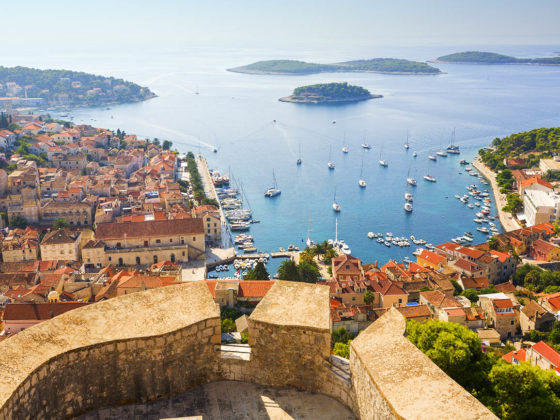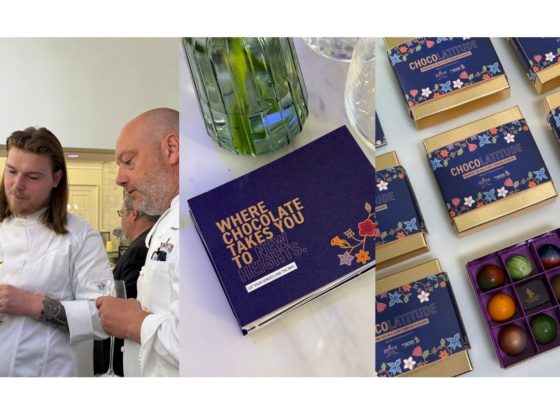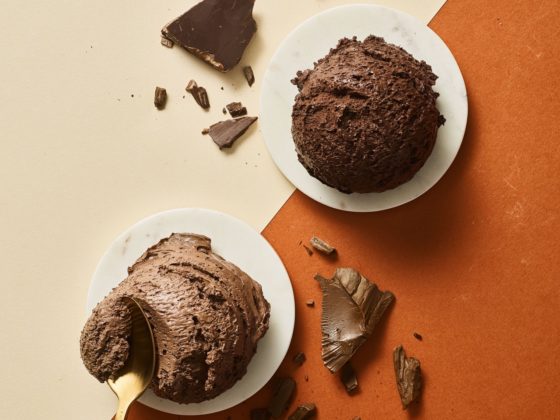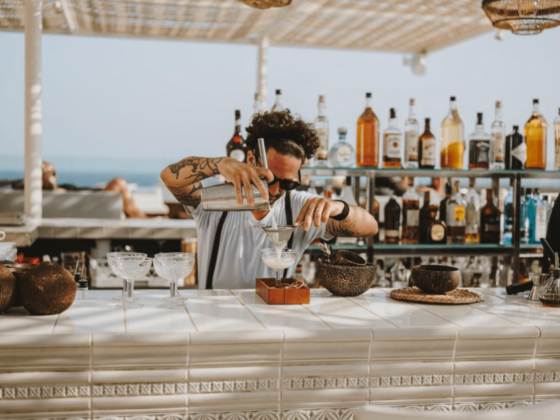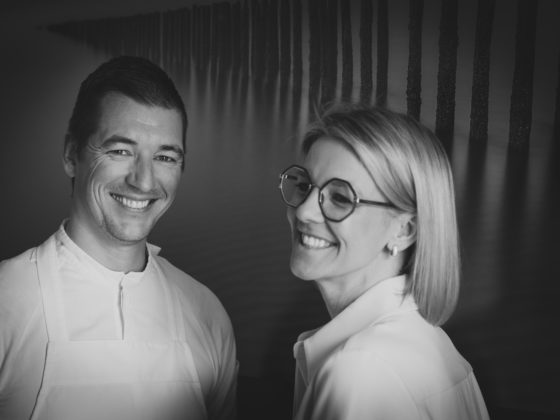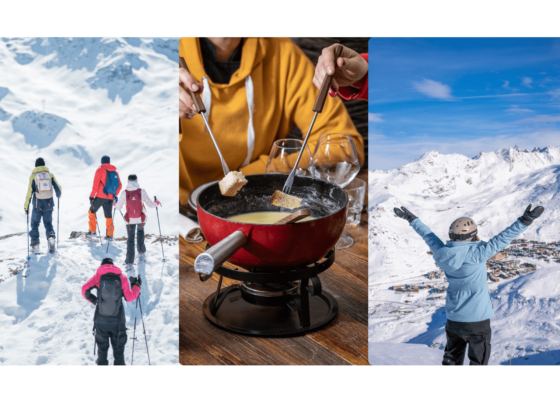Our wine specialist Jasper Van Papeghem is ex Best Sommelier of Belgium 2017-2018 and former sommelier of two-star restaurant De Jonkman in Bruges. Each month, he brings his own unique perspective on the world of wine. And he gives insight into his notebook with 'coup de coeurs'.
I know the dishes of chef Filip Claeys very well! We have worked together for years and I admire his courageous choice to always work with North Sea fish and, above all, his inexhaustible energy to put these often unknown fish in the spotlight everywhere. Therefore, his dish with fried haddock and a cream of asparagus could not be missing from my third and final article on asparagus pairing. Don’t worry, there are many more delicious pairings to come!
Pairing 3: Fried haddock with cream of asparagus by Filip Claeys of De Jonkman – Bruges
Supplies for 1 person:
- 1 haddock
- 200g white asparagus
- 100g whipped cream
- 4 slices of sourdough bread
- Olive oil
- 12 mini radishes
- Radish flowers

Preparation:
- Haddock: Scale the fish, rinse it under cold water, fillet and remove side and middle bones. Cut into the desired pieces. Season with salt and pepper. Fry the piece of haddock in a pan with corn oil for 1 minute on the skin side, turn the fish over and cook for another minute on the other side, finish with lemon juice.
- Asparagus Cream: Peel the asparagus and cut into fine pieces. Immerse the asparagus in water and season with salt and pepper. Add a knob of butter and cook for 5 minutes. Drain, blend the asparagus into a puree and leave to cool. Mix in the whipped cream, finish with lemon juice.
- Asparagus tip:Cook the asparagus tips in salted water (about 2 minutes). Drain and cut in half.
- Sourdough toast: Cut the slices into the desired shape. Place on a baking tray lined with greaseproof paper, place another tray on top and bake the toasts for 10 minutes at 180°C.
- Radish:Cut the radishes into the desired shape, rinse to remove any sand and marinate with olive oil and lemon juice.
- Finish:Place the piece of haddock in the centre of the plate, place the cooked asparagus tip on top and finish with the cream of asparagus. Place the sourdough toast on the cream and arrange the radishes nicely on top. Finish with the radish flowers and olive oil.
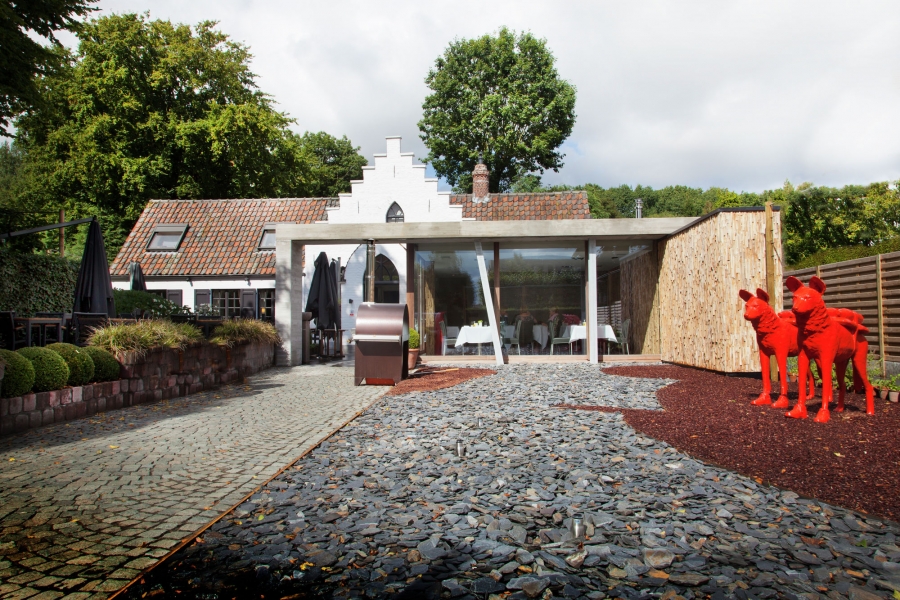
Haddock is a fairly firm fish, somewhat similar to cod but slightly softer in texture. Theasparagus cream and the structure of the fish, because of their creamy, soft structure, require a slightly stronger wine to support them. The sourdough bread, on the other hand, wants a wine with enough acidity to keep it sappy. Filip’s real strength lies in his ability to create incredible taste bombs with few ingredients. So we’re looking for a pure, quite rich, full-bodied wine that must be earthy and elegant without any wood aging. Wood aging in white wines usually results in rounder acids and, above all, a slightly bitter component that rarely matches the bitterness of asparagus. Full, rich, refined, mineral, spicy… Riesling and Grüner Veltliner, preferably from Germany or Austria, spring to mind. Because I want to devote another article to Germany, today I’ll stick with 100% Austria.
I found the perfect match with Weingut Bründlmayer Heiligenstein Riesling 2014 (winesjanrots.be). I confess: I have an incredible weakness for ripened Riesling… In my humble opinion, there are few grape varieties that combine such aromatic potential with an incredible fine mouthfeel and length, not to mention its unbelievable storage potential. The first thing one notices is the minerality followed by some pepper notes and lots of green herbs. In the background, some nuts and a slight petroleum note that is quite typical of the grape and region. The mouthfeel in particular shows the potential of this mighty grape here: creamy, rich, mouthfilling with fine acidity that perfectly supports the bitterness. In this winepairing, we reflect what we find in the plate in the glass: creamy, rich, fresh acids (just think of the radishes in the dish), lots of length and above all tension between the different components in the dish and in the wine. 2014 seems a bit old but this wine is still very much alive and is only now beginning to unleash its full potential.

Another brilliant combination I found at Johann Donabaum Ried Zornberg Grüner Veltliner Smaragd 2017 (winesjanrots.be). The Wachau is quite rightly considered one of the most beautiful and exciting wine regions in the world. Steep slopes, fantastic soils and small Rieds (cru’s)that make for very diverse and above all surprising wines. The Smaragd is the most powerful wine produced in the Wachau but for once this has nothing to do with the wood aging but mainly with the ripeness at picking and the slightly higher alcohol content. I have known Johan Donabaum for a long time and for me personally he is one of the greatest Austrian winemakers. He succeeds in perfectly fusing power, balance, ripeness and elegance. In the nose, we have above all aripe exotic fruit note followed by some white pepper, citrus and some spicy herbs. On the palate, it is especially surprisingly powerful, very mouth-filling with fresh acidity and incredible length. This is rather what I like to call acompetitive pairing in which the dish and the wine take turns to play the leading role, lifting each other to a higher level. The creaminess of the wine and the cream of the asparagus, the saltiness of the fish with the high minerality of the wine and the acidity of the radish, and the crispness of the sourdough with the fine acidity…

For the last wine, I was looking for a wine that would be rather supportive and let the dish shine. So I’m looking for a wine that is quite round and mouth-filling with some ripe acidity and a warm, southern touch. The Maçanita Irmãos e enologos 2019 (Wijnhandel Annicaert) is the perfect example of this. I usually associate the Douro with rich, warm wines with a strong wood lagging that demand powerful dishes but this wine is surprisingly fine. The grapes here come from the higher altitude areas of the Douro Valley (600-700m above sea level) which gives them a higher acidity at harvest. The wine is not aged in wood but is aged for half a year in stainless steel barrels, which gives it fnine acidity and a nice touch of fruit. In the nose some pear, melon and grapefruit while in the mouth we have a slightly oily structure with fresh acids and again the white fruit that returns. The slightly sultry, southern mouthfeel goes perfectly with the haddock and cream of asparagus and has enough length to keep up with the dish. Perhaps a slightly safer combination but one that works perfectly.

Finally, I would like to say this: find your own combinations and never be afraid to try and colour outside the lines. Your taste is your taste. Of course, with our white gold, the possible combinations are infinite and, as with the preparation of white asparagus, the only limits to the pairing are your imagination and creativity. You can make great combinations with different beers or get creative with sherry or sercial madeira which is one of my favourite combinations by the way, but we’ll keep that for another time.
So… My asparagus series is over! You can find all the articles in the section PureFood. I hope you enjoyed them and above all, stay tuned: because soon we will serve you some delicious apero tips to cheer on the Red Devils!
Do you want to discover more great food spots? Take a look at our PureFood page!


